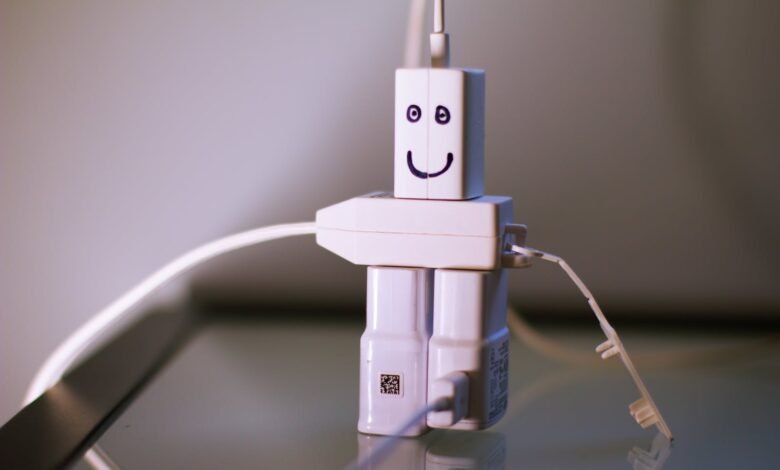C13 Plug vs. C14 Power Cord: 5 Crucial Distinctions You Need To Know

Picking between C13 and C14 power cords can have you entangled in a maze of confusion. Things can only get worse if you make the common electrical mistake of using one cable in the place of another.
Fortunately for you, we’ve prepared a guide to C13 and C14 cords with a focus on the core differences between these popular electrical cables. Read on for an insightful comparison before picking either cord.
Introducing C13 Plug And Power Cords
A C13 power cord is an electrical cable designed primarily for connecting computer systems. It’s the cord you’ll normally find attached behind desktops and computer monitors.
A C13 plug has several defining features. The cable is most noted for having three prongs (as opposed to two) on one of its ends.
C13 power cords are also known as kettle cords. However, the term “kettle cord” is a misnomer, as C13 plugs are typically incapable of powering the heavy-duty electric kettles. Most electric kettles require cords with higher thermal resistance, such as C15 and C16.
Introducing C14 Power Cords
The C14 power cord is arguably the most common connector. So common is the cable that it’s considered the global standard for the connector end of an extension cord.
Like C13, a C14 power plug has three prongs. The two plugs also have the same pin arrangement. That means a C13 power cable can safely plug into a C14 socket and vice versa.
Besides, both the C13 and C14 power cords are erroneously referred to as “kettle cords.” But that’s as far as their similarities go, as the following section shall reveal.
Differences Between C13 and C14 Power Cords
- Plug Shape and Size
Both C13 and C14 power cables are three-pronged cords. However, they differ considerably in their plug shapes.
A C13 power cord features a circular plug, whereas the C14 cord has an octagonal one.
These plug shape differences aren’t only for the optics. They’re a functional specification that determines how each cable connects to an electrical device.
So, examine your computer system closely before plugging either connector into it.
Besides their plug shapes, C13 and C14 may also come in different plug sizes. It’s equally imperative to match the correct plug size with your computer device. Do not attempt to force a plug into a device, or you could damage the pins, subjecting yourself to costly electrical repairs or replacements.
Number of Pins
One end of a C13 power cord constitutes the standard alternating current (AC) plug, while the other end features three prongs.
Two of the three prongs are flat and sit on top, while one is roundish and is set underneath the two flat ones. The round prong constitutes the “grounding pin.”
C14 power cords have nearly similar prong and pin arrangements. However, these cords come with an extra third pin on both ends of the wire.
This unique design makes C14 cords particularly suitable for electrical devices with both ends plugged into a power outlet.
Voltage Rating
Another difference between C13 and C14 cords relates to their voltage ratings.
C13 cords are rated for up to 10 amperes at 250 voltages. These connectors can safely power appliances that run on 120 or 240 volts.
On the other hand, C14 cords are rated for up to 15 amps at 250 volts. Such connectors are suitable for use with devices rated up to 230 volts.
Theoretically, C13 cords would be ideal for connecting slightly more power-hungry devices.
But as you shall find, the suitability of one connector over the other depends on many different factors.
Applications
C13 and C14 connectors share the same general applications. Both power cords are commonly used for powering computers and computing devices. However, they differ on the exact appliance you can use them with.
C13 connectors are ideal for standard mains cables. In contrast, C14 connectors work best with devices, extension cords, and power supplies.
Also, while both C13 and C14 power cords work exceptionally well with computer systems, C13 connectors are great for desktops and laptops, while C14 cords work with a wide range of computer devices.
The octagonal shape of C14 plugs improves their compatibility, allowing them to fit into different computer appliances. These range from computers and laptops to monitors, printers, etc.
Cable Length
Electrical cords vary in length, from a few feet to several feet. When choosing these wires based on length, it’s important to factor in the distance from the wall outlet to the electrical device that needs to be powered.
C13 and C14 cords primarily help in connecting electrical devices in a room to a wall socket. Therefore, they’re typically only a few feet long.
Most C13 power cords measure three feet.
The shorter the length, the better the wire’s current handling abilities. That explains why some people use C13 cords to connect power-hungry appliances like freezers, refrigerators, and air conditioners.
For comparison, most C14 power cords are six feet long. Their greater length makes them more suitable for lighter-duty electrical devices.
However, remember that both C13 and C14 cables are essentially used with computer appliances. Also note that size for size, C14 cords are more versatile due to their octagonal shape.
Which Connector Is Better?
C13 and C14 connectors are similar in many ways yet different in some. C14 cables are ideal for connecting a variety of computer appliances, while C13 cables are suitable for both computer devices and some heavy-duty home appliances, such as refrigerators.



